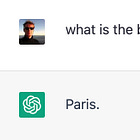Summer is here - dive in and read all about what we learned this year about AI!
Reflecting on the first Year of /PromptCollective AI experiments: Human and AI synergies, Text to video, ethical thoughts, manifestos and guardrails, and so much more.
Dear Prompt Collective Readers,
As we conclude our first year, we must reflect deeply on our journey, exploring the dynamic interplay between AI and creativity. This year has been a profound exploration of how AI redefines creative landscapes, offering new opportunities and raising important questions about the nature of creativity itself.
If you have been reading along for the past year the below will serve as a recap, if you’re a newcomer to the newsletter this is probably a good place to start. It’s great that you’re here!
The Human-AI Synergy
Our exploration began with the foundational idea that AI should not merely be seen as a tool but as a collaborative partner in creativity. This synergy between human intuition and machine precision has transformed tedious tasks into innovative processes. This transformation is not just about efficiency; it’s about opening new avenues for creativity, allowing for a greater focus on conceptual innovation rather than execution.
The interaction between human creativity and AI has proven to be a dynamic force. Through various experiments, we demonstrated how AI can act as an interactive tool, enhancing learning and creativity. The ability of AI to respond, adapt, and evolve in real-time interaction with humans showcases its potential to aid and amplify our creative endeavors. This interactive creativity pushes the boundaries of traditional creative processes, introducing new ways of thinking and creating.
AI as a Creative Force
AI's role in creative production has been a recurring theme, illustrating its capability to generate art, music, and even entire films. The revolutionary impact of AI on visual storytelling highlights its ability to potentially democratize content creation, not unlike when cheap DV cameras became widely available and enabled a new generation of filmmakers and a new aesthetic to enter the mainstream.
Tools like Sora (when made available) allow more people to participate in the creative process, breaking down barriers and making high-quality production accessible to all. Most recently OpenAI and the Tribeca Film Festival curated the program Sora shorts and we believe that OpenAI will continue to court the creative industries in the next year.
Automated content creation further pushed the envelope. Creating a fully automated TikTok influencer, for instance, tested the limits of AI’s creative capabilities and underscored the importance of human oversight. The iterative process of refining AI-generated content highlights the delicate balance between automation and the human touch, which is crucial for ensuring quality and creativity.
Ethical and Philosophical Reflections
Beyond practical applications, our journey delved deeply into the ethical and philosophical questions raised by AI in creativity. The evolving concept of authenticity in the digital age was a key theme. AI’s ability to generate unique outputs challenges traditional notions of originality, suggesting that these works possess a “digital aura.” This idea invites us to rethink our relationship with art and creativity, recognizing the value in AI-generated content’s uniqueness and its capacity to reflect human-like authenticity.
The balance between creative freedom and safety guardrails in AI development was another critical area of reflection. While safety measures are essential to prevent misuse, they can also stifle creativity. Open-source models, which allow for greater experimentation, push the boundaries of creative expression. This balance is crucial for fostering innovation while ensuring responsible use of AI technologies.
The addition of the AI Manifesto highlighted the complex relationship between AI and the film industry. It called for a collective effort to protect human creativity, demand fair compensation for cultural works used in AI training, and insist on transparency and labeling for AI-generated content. This manifesto reflects a broader societal concern about maintaining the integrity and humanity of creative processes amidst rapid technological advancements.
Working with AI Personas
An important aspect of our exploration was understanding how different personas in AI interactions can benefit the creative process. As recently expressed on AI assistants Sam Altman’s thoughts provide valuable insight. He describes two approaches: the “self-extension” and the “senior employee.” The self-extension acts as a “ghost” of the user, autonomously handling tasks like email replies, embodying the user’s persona. The senior employee approach treats the AI as a trusted advisor, capable of pushing back and reasoning independently, akin to a competent colleague.
Altman favors the separate entity approach, envisioning AI as a trusted partner rather than a sycophant. This perspective aligns with our experiences, where AI acts not just as an extension of ourselves but as a collaborator that brings its own “personality” and strengths to the table. This relationship enhances creativity by providing diverse perspectives and challenging our ideas, much like a real human collaborator would.
Broader Implications and Future Directions
As we look back, it’s clear that AI is not just a tool for enhancing creativity but a force that potentially redefines it. AI challenges us to expand our understanding of creativity, pushing us to explore new forms of artistic expression and collaboration. The potential of AI to democratize art and creativity is one of its most profound impacts. By lowering barriers to entry, AI tools enable a broader range of voices to contribute to the cultural landscape, fostering diversity and inclusivity in the creative process.
Our journey also underscored the importance of ethical considerations in AI development. As AI becomes more integrated into creative workflows, addressing issues of copyright, authenticity, and responsible use is paramount. Ensuring transparency and ethical guidelines will be critical for building trust and promoting the positive potential of AI in the creative industries.
Looking Ahead
As we move forward, we remain committed to exploring the exciting frontier of AI and creativity. Our journey is far from over, and there are many more innovations, experiments, and discussions to come. We invite you to join us, share your thoughts, and engage with the ever-evolving landscape of AI-driven creativity.
Thank you for being part of our community. Let’s continue to inspire and be inspired by the endless possibilities at the intersection of AI and creativity.
Stay Inspired and get in touch with your thoughts or questions. We’d love to hear from you.
And if you’ve enjoyed it please:
Finally, as an example of some of the advances in AI video we have seen over the past year, it has become a benchmark to generate videos of Will Smith eating spaghetti:
First March 2023 using Stablediffusion:
June 27th 2024 using Kling AI technology:
We’re excited to follow the Will Smith pasta consumption in the following months.
Until next time!
Hannes Jakobsen and Jes Brandhøj










